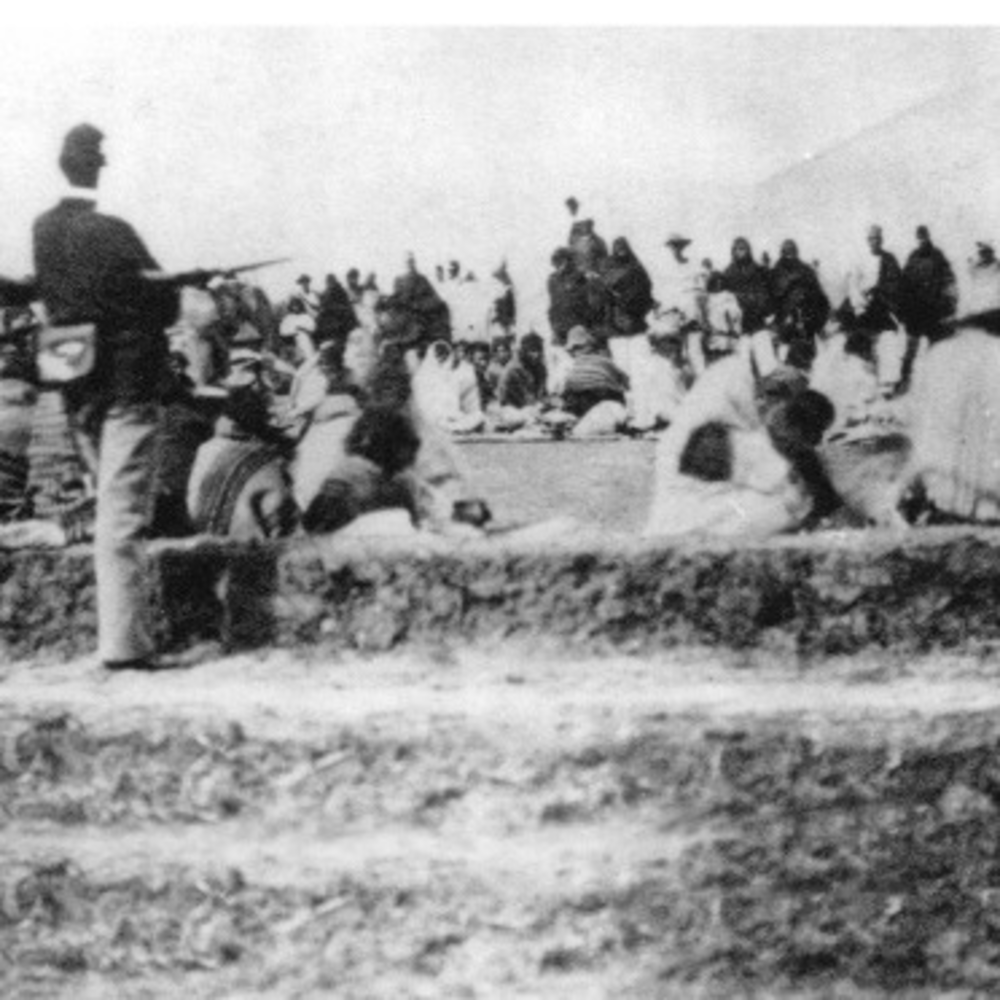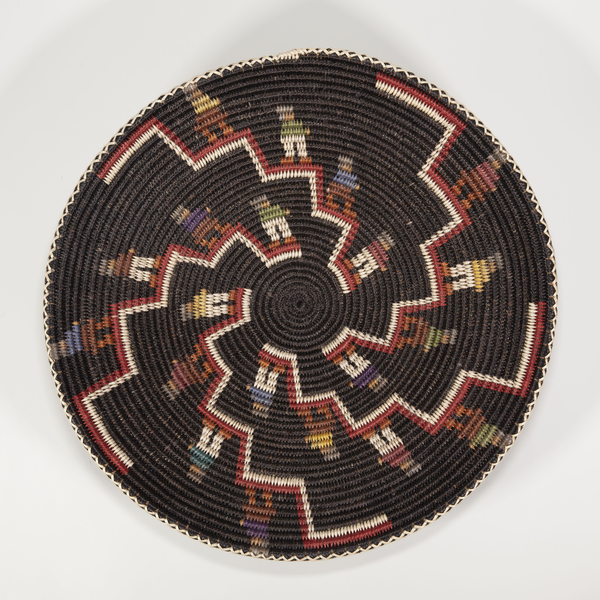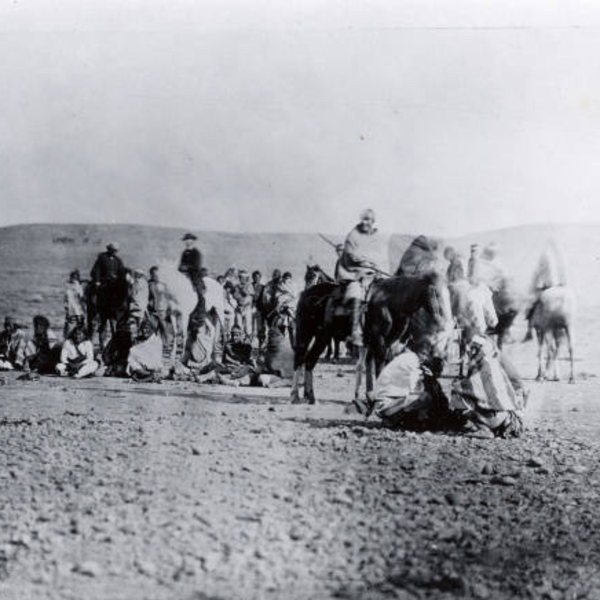Bosque Redondo
By November 1864, about 8,570 Diné (Navajo) were imprisoned by the United States government at Bosque Redondo, an internment camp in eastern New Mexico. The Diné came to call the camp Hwéeldi, the place of suffering. Bad water, meager food and housing, harsh winters, and disease all contributed to the captives’ misery. Diné prisoners were expected to embrace American cultural values, such as farming, Christianity, individualism, and the English language, in accordance with the federal policy of Indian assimilation. Facing reports of appalling conditions at the camp, the U.S. government to tried to force Diné leaders to accept removal to Indian Territory in present-day Oklahoma. The Diné remained fiercely determined to return home. Diné leaders successfully negotiated a treaty that secured their return to Dinétah (the Diné homeland) and forged a diplomatic relationship with the federal government in 1868. By then, 2,000 Diné captives, nearly one in four, had died and remain buried at Bosque Redondo in unmarked graves.



